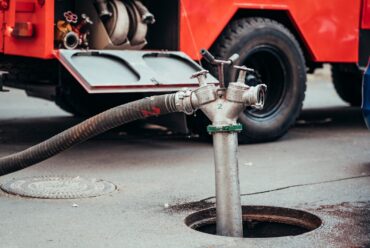How Sump Pumps Prevent Basement Flooding and Water Damage
Preventing basement flooding is crucial for maintaining the structural integrity of your home and ensuring a healthy living environment. Basement flooding not only damages your property but also poses serious health risks due to mold and mildew growth. One of the most effective tools to combat this issue is a sump pump, designed to keep your basement dry by removing excess water and preventing water buildup.
A sump pump works by collecting water accumulated in a basin, commonly located in the lowest part of your basement, and pumping it away from your home. This simple yet efficient mechanism can save you thousands of dollars in potential repairs and avoid the hassle of dealing with water damage. Understanding its role, features, installation, and maintenance is essential for any homeowner looking to protect their property from water-related issues.
Many homes, especially those in areas prone to heavy rainfall or with high water tables, can benefit from the installation of a sump pump. Regular inspections and proper maintenance will ensure that your sump pump operates efficiently when needed most. Join us as we delve into the critical aspects of sump pumps, guiding you through the intricate details of preventing basement flooding effectively.
Understanding the Role of Sump Pumps in Basement Flood Prevention
Sump pumps are designed to address the issue of basement flooding by effectively managing excess water that can accumulate in your basement. Located in a sump pit at the lowest point of your basement, these pumps activate when water levels rise, automatically pumping the water out and away from your home. This process prevents water from collecting and causing damage to your basement’s structural integrity.
A properly functioning sump pump is essential for homes in flood-prone areas or with high water tables. By actively removing water, sump pumps protect against moisture that can lead to mold growth, mildew, and even foundation damage. Regular inspections by our professionals can ensure that your sump pump is always ready to perform when needed, safeguarding your home from unexpected water damage.
Key Features to Look for When Choosing a Sump Pump
Selecting the right sump pump for your home involves understanding several key features that determine its efficiency and reliability. One crucial factor is the pump’s horsepower, which affects how much water it can move per hour. For most homes, a pump with 1/3 to 1/2 horsepower is sufficient, but those in areas with higher flood risks may require more powerful models.
Other important features include the type of pump—either submersible or pedestal. Submersible pumps are more discreet and quieter but can be more expensive, while pedestal pumps are easier to service and cost-effective but tend to be noisier. Additionally, look for a sump pump with a durable construction, such as cast iron, which can handle higher stress and last longer.
An often overlooked but vital feature is the pump’s switch type. Automatic float switches are common and activate the pump when water reaches a certain level. Check valves are also essential as they prevent water from flowing back into the pit once pumped out. Investing in a reliable battery backup system ensures your sump pump works even during power outages, providing continuous protection for your home.
Step-by-Step Installation Process for Sump Pumps
Installing a sump pump involves several critical steps to ensure proper operation. The first step is to choose the right location for your sump pit, usually at the lowest point of the basement. This helps collect water effectively. Once the location is determined, the next step is to dig a hole deep and wide enough to accommodate the sump pit liner. The liner is then placed into the hole and secured.
Following this, the sump pump is installed inside the pit, ensuring that it is level and stable. It’s connected to a discharge pipe that will carry water out of the basement to a designated drainage area. Finally, the pump is plugged into a power source and tested to confirm that it is functioning correctly. Our professionals ensure that each step of the installation process is completed meticulously, guaranteeing the long-term efficiency and reliability of your sump pump.
Conclusion
Understanding the role of sump pumps and selecting the right features can make a significant difference in preventing basement floods. Proper installation is equally crucial to ensure the pump operates effectively when needed most. Routine maintenance is essential to maintaining the efficiency and durability of your sump pump. Regularly checking the pump, cleaning the pit, and testing the backup system can prevent unexpected failures and prolong the life of your equipment.
For homeowners looking to safeguard their basements from water damage, investing in high-quality sump pumps in San Antonio and ensuring correct installation and maintenance is vital. At Roadrunner Plumbing & Air, our team specializes in every aspect of sump pump services, from selection and installation to routine maintenance and emergency repairs. Contact us today to protect your home from flooding and maintain a dry and safe basement environment.












No Comments